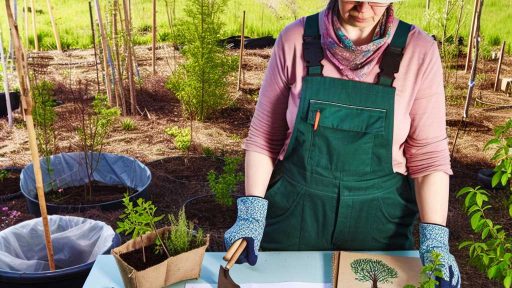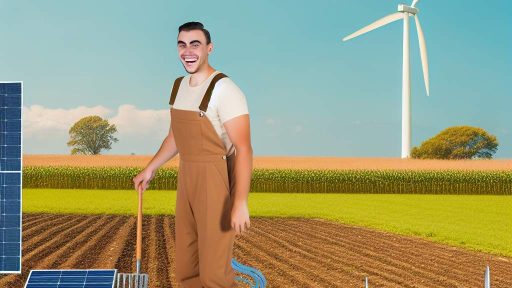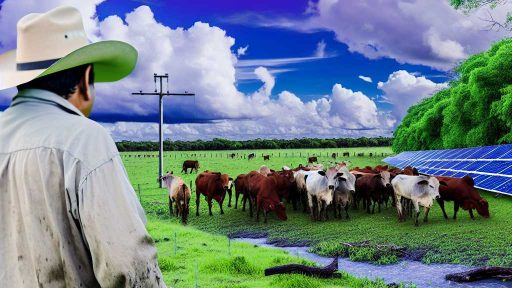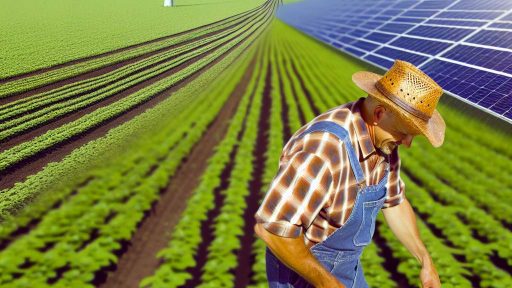Introduction to Precision Agriculture and its Relevance
Precision agriculture represents a revolutionary approach in farming practices.
This method utilizes technology to observe and manage crop variability.
Farmers now leverage data to enhance yield and efficiently use resources.
With the global population rising, food production demands increase significantly.
Thus, precision agriculture plays a crucial role in meeting these needs.
Moreover, this approach helps reduce environmental impact.
It minimizes waste and promotes sustainable farming practices.
Farmers can significantly lower input costs by optimizing resource use.
Consequently, precision agriculture fosters economic viability for farms.
Another essential aspect is its contribution to soil health and conservation.
This method recognizes the unique characteristics of different soil types.
It recommends tailored management practices for diverse agricultural zones.
Furthermore, precision agriculture enhances soil protection against erosion.
By implementing various techniques, farmers can maintain soil integrity.
This holistic approach benefits not only the land but the surrounding ecosystem.
Transform Your Agribusiness
Unlock your farm's potential with expert advice tailored to your needs. Get actionable steps that drive real results.
Get StartedAs technology continues to evolve, so does precision agriculture.
Innovations such as drone mapping and soil sensors are becoming standard.
Overall, precision agriculture is essential for sustainable development in farming.
It provides a way to balance productivity with environmental stewardship.
Overview of Soil Erosion: Causes and Consequences
Understanding Soil Erosion
Soin erosion is a significant environmental issue.
It involves the displacement of the topsoil layer.
This layer is crucial for crop production and ecosystem health.
Factors contributing to soil erosion include water, wind, and human activities.
Causes of Soil Erosion
Water erosion results from rainfall and surface runoff.
Wind erosion occurs in dry, barren areas.
Deforestation significantly accelerates soil loss.
Improper agricultural practices weaken soil structure.
Overgrazing by livestock reduces vegetation cover.
Consequences of Soil Erosion
Soil erosion leads to reduced agricultural productivity.
This reduction impacts food security and farmer incomes.
Additionally, it contributes to water quality degradation.
Sediment runoff can harm aquatic ecosystems.
Furthermore, erosion results in long-term landscape changes.
The loss of soil leads to increased reliance on fertilizers.
Impact on Soil Conservation Efforts
Soil erosion conflicts with conservation goals.
It complicates efforts to maintain healthy ecosystems.
Addressing erosion requires innovative conservation strategies.
Farmers must adopt sustainable practices to protect soil health.
How Precision Agriculture Techniques Reduce Soil Erosion
Utilizing Data for Better Decisions
Precision agriculture relies on data to inform planting strategies.
Showcase Your Farming Business
Publish your professional farming services profile on our blog for a one-time fee of $200 and reach a dedicated audience of farmers and agribusiness owners.
Publish Your ProfileThis approach minimizes soil disturbance during cultivation.
Farmers use GPS technology to plant seeds at optimal depths.
This technique effectively reduces erosion caused by water runoff.
Implementing Targeted Irrigation Practices
Precision agriculture employs advanced irrigation techniques.
These techniques reduce water usage and limit soil erosion.
Farmers utilize soil moisture sensors to guide irrigation schedules.
Consequently, they apply water only when necessary.
Enhancing Crop Variety Selection
Farmers select crop varieties based on local soil conditions.
This choice leads to healthier plants and robust root systems.
Strong roots help bind the soil, reducing erosion risks.
Additionally, cover crops protect against soil degradation.
Utilizing Conservation Tillage Techniques
Conservation tillage minimizes soil exposure.
Farmers leave crop residues on the soil surface.
This practice helps maintain soil structure and moisture levels.
Overall, it reduces the impact of heavy rainfall on erosion.
Implementing Effective Crop Rotation Strategies
Crop rotation maintains soil fertility and structure.
This approach breaks pest cycles and improves biodiversity.
Diverse crops lead to a more stable soil ecosystem.
Ultimately, the soil becomes less vulnerable to erosion.
Adopting Technologies for Monitoring and Feedback
Farmers use drones and sensors for real-time monitoring.
This technology helps identify erosion-prone areas promptly.
With timely feedback, farmers can adjust their practices.
Such proactive measures significantly minimize erosion risks.
See Related Content: Renewable Resource Utilization for Energy-Efficient Farming
The Role of Technology in Monitoring Soil Health
Technological Innovations
Recent advancements in technology have transformed agricultural practices.
Farmers now utilize satellite imagery to assess soil conditions.
This imagery provides valuable insights into moisture levels and nutrient content.
Additionally, drones collect real-time data for precise monitoring.
These innovations significantly enhance decision-making processes on farms.
Soil Sensors
Soil sensors play a critical role in tracking soil health.
These devices measure moisture, temperature, and pH levels.
Farmers can monitor these factors remotely via smartphone applications.
This capability allows for quick adjustments to irrigation and fertilization.
Ultimately, sensors contribute to more sustainable agricultural practices.
Data Analytics
Data analytics transform raw data into actionable insights.
Farmers can analyze trends over time to identify potential issues.
Advanced software enables predictive modeling for future soil health.
This fosters proactive strategies for managing soil erosion.
Moreover, it assists in developing tailored crop management plans.
Impact on Soil Conservation
Technology enhances soil conservation efforts on farms.
Showcase Your Farming Business
Publish your professional farming services profile on our blog for a one-time fee of $200 and reach a dedicated audience of farmers and agribusiness owners.
Publish Your ProfileBy monitoring soil health closely, farmers can implement better practices.
These practices reduce soil degradation and erosion rates.
Furthermore, technology promotes crop rotations and cover cropping.
Such measures improve soil structure and biodiversity.
Collaboration and Education
Collaboration among farmers, scientists, and technologists is vital.
Educational programs enhance understanding of soil health best practices.
Workshops can facilitate knowledge-sharing on innovative technologies.
This collective effort encourages sustainable farming methods.
Together, they can ensure the longevity of our agricultural resources.
Discover More: Renewable Resource Utilization in Sustainable Pest Control
Case Studies: Successful Implementation of Precision Agriculture
Case Study from Green Valley Farms
Green Valley Farms implemented precision agriculture techniques in their fields.
They utilized GPS technology to create detailed maps of their land.
This mapping allowed them to apply fertilizers and pesticides more efficiently.
As a result, their soil health improved significantly over time.
Moreover, they reduced chemical runoff into nearby waterways.
Consequently, their overall yield increased by 15% over three years.
Innovation at Blue Skies Agricultural Solutions
Blue Skies Agricultural Solutions adopted drone technology for crop monitoring.
Drones helped them to identify trouble areas in their fields swiftly.
This approach allowed for targeted interventions, minimizing soil disturbance.
They saw a notable decrease in soil erosion rates after one growing season.
In addition, their water usage decreased by 20% through precise irrigation methods.
Success in Riverbend Cooperative
Riverbend Cooperative collaborated with local universities on precision farming research.
The research focused on optimizing crop rotation and cover cropping strategies.
Implementation of these practices led to enhanced soil structure and fertility.
The cooperative reported substantial improvements in soil organic matter levels.
This initiative significantly reduced soil erosion during heavy rain events.
Farmers’ Feedback and Community Impact
Farmers who implemented these technologies shared positive experiences.
Many noted the reduction in labor and input costs associated with precision agriculture.
Additionally, the community witnessed improved water quality in local streams.
Engaging with stakeholders led to broader acceptance of sustainable practices.
These case studies highlight the transformative potential of precision agriculture.
Explore Further: Best Soil Nutrient Management for Long-Term Farm Sustainability
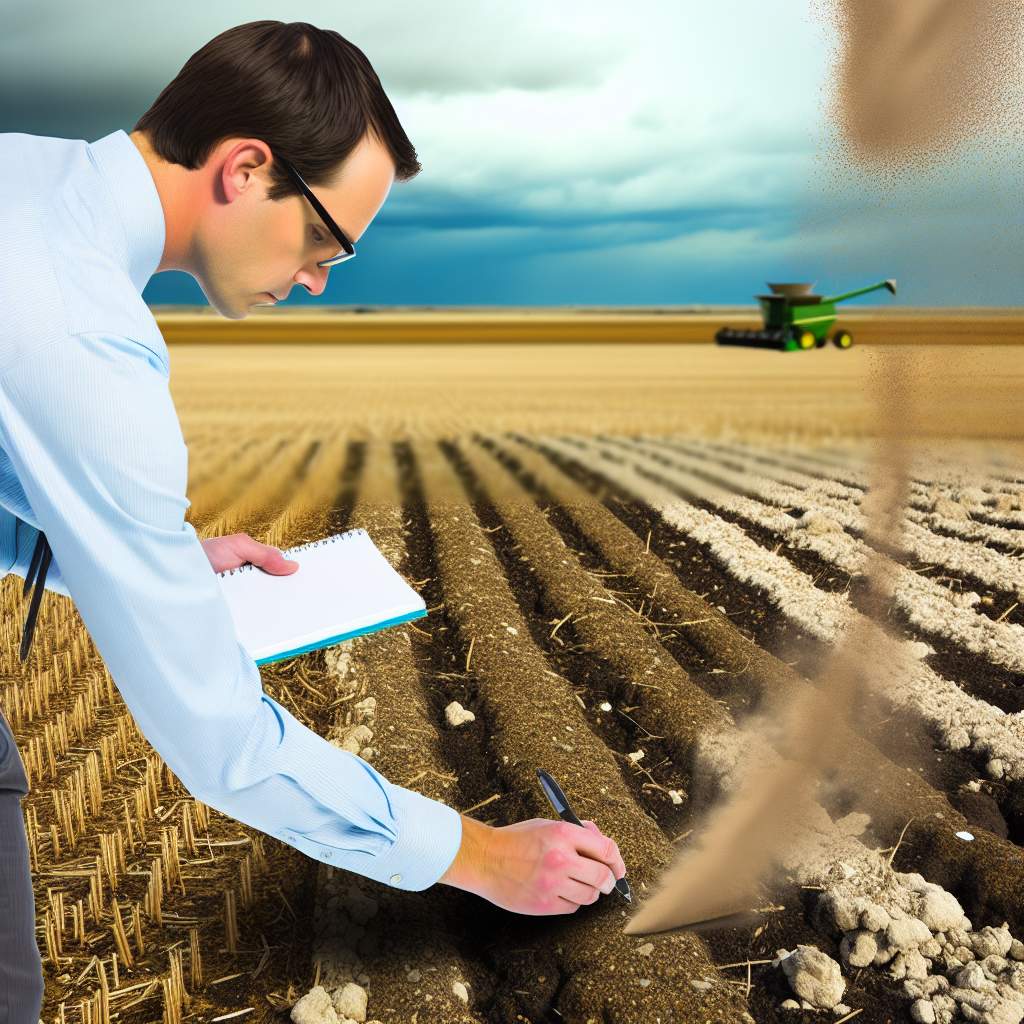
Strategies for Enhancing Soil Conservation in Precision Farming
Utilizing Precision Data
Precision agriculture employs data to monitor soil health.
This technology allows farmers to understand soil composition deeply.
By analyzing data, farmers can identify erosion-prone areas.
They can then apply targeted interventions to combat erosion.
Implementing Cover Crops
Cover crops play a vital role in maintaining soil structure.
They reduce erosion by providing ground cover during off-seasons.
Moreover, cover crops enhance nutrient retention in the soil.
Consequently, farmers experience less soil degradation over time.
Showcase Your Farming Business
Publish your professional farming services profile on our blog for a one-time fee of $200 and reach a dedicated audience of farmers and agribusiness owners.
Publish Your ProfileAdopting Conservation Tillage
Conservation tillage minimizes soil disturbance significantly.
This method leads to improved soil structure and health.
It also decreases runoff and erosion during heavy rainfall.
Farmers adopting this practice see enhanced water retention.
Integrating Agroforestry Practices
Agroforestry combines agriculture with tree planting.
This strategy reduces wind and water erosion effectively.
Additionally, trees improve soil fertility and organic matter.
Farmers benefit from increased biodiversity and crop yields.
Enhancing Crop Rotation Systems
Crop rotation improves soil health by diversifying plant species.
This practice reduces pest buildup and disease prevalence.
By switching crops, farmers can restore essential nutrients.
Thus, they ensure better yields and less soil stress.
Incorporating Technology for Monitoring
Technology can help monitor soil erosion in real-time.
Using drones and sensors allows for precise data collection.
Farmers can adapt strategies promptly based on findings.
Timely interventions significantly enhance soil conservation efforts.
Delve into the Subject: Biodiversity Enhances Farm Resilience
Economic Benefits of Reducing Soil Erosion with Precision Agriculture
Improved Crop Yields
Precision agriculture enhances crop yields significantly.
Farmers can apply exact amounts of water and nutrients.
This targeted application minimizes waste and increases efficiency.
As a result, overall productivity improves across the farm.
Cost Savings on Inputs
Farmers see substantial savings on agricultural inputs.
Precision technology allows for better resource management.
Using sensors and data analytics reduces excess fertilizer use.
This efficient application lowers operational costs dramatically.
Long-Term Soil Health
Maintaining soil health is crucial for farming sustainability.
Precision agriculture practices help combat soil erosion.
These methods keep valuable topsoil intact and rich in nutrients.
Consequently, farmers can sustain yields over longer periods.
Environmental Incentives and Regulations
Governments increasingly support environmentally friendly practices.
Farmers adopting precision techniques may qualify for subsidies.
Moreover, regulations often reward reduced soil degradation.
Therefore, implementing these practices benefits both farmers and the environment.
Enhanced Marketability of Produce
Consumers demand sustainably grown products more than ever.
Farms utilizing precision agriculture can market their produce effectively.
Increased sustainability often translates to higher prices in the market.
Consequently, this boosts farmer profitability overall.
Future Prospects: Innovations in Precision Agriculture for Soil Conservation
Integrating Advanced Technologies
Precision agriculture increasingly uses advanced technologies to conserve soil.
Drones play a crucial role in monitoring soil health.
They collect data on erosion patterns and moisture levels.
Showcase Your Farming Business
Publish your professional farming services profile on our blog for a one-time fee of $200 and reach a dedicated audience of farmers and agribusiness owners.
Publish Your ProfileAdditionally, sensors help farmers manage nutrients more efficiently.
This integration supports targeted application and reduces runoff.
Data-Driven Decision Making
Farmers leverage big data to enhance soil conservation efforts.
This approach involves analyzing soil composition and crop performance.
Predictive analytics enable them to forecast erosion risks.
Consequently, tailored interventions can be implemented proactively.
Soil Health Monitoring Innovations
Innovative soil health monitoring tools are gaining popularity.
These tools provide real-time feedback on soil conditions.
Farmers can track changes and adjust practices accordingly.
For instance, automated soil moisture sensors help optimize irrigation.
As a result, this leads to better water management and reduced erosion.
Creating Sustainable Agricultural Practices
Fostering sustainable practices is essential for soil conservation.
Cover cropping prevents soil erosion while enhancing fertility.
Moreover, reduced tillage conserves soil structure and moisture.
Farmers are also adopting agroforestry to improve soil health.
This practice combines trees and crops, ultimately benefiting biodiversity.
Collaboration and Knowledge Sharing
Collaboration among stakeholders enhances soil conservation efforts.
Farmers, researchers, and policymakers can share valuable insights.
Extension services provide training and resources for best practices.
Engaging communities fosters a collective approach to sustainable farming.
As a result, efforts are more impactful and comprehensive.

